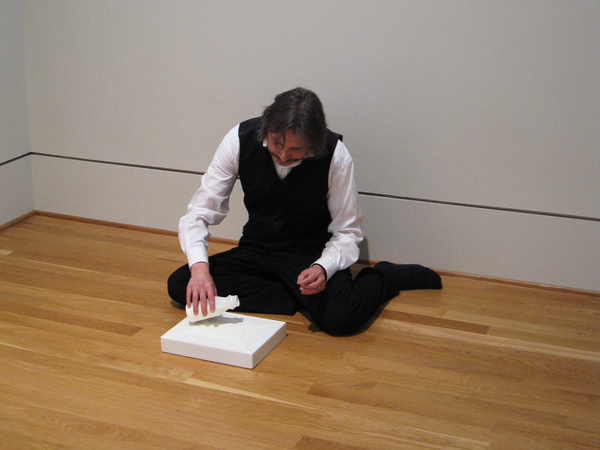
Director of the Center for the Study of Modern Art Klaus Ottmann pours milk onto Wolfgang Laib's Milkstone. Photo: Sarah Osborne Bender
Wolfgang Laib initially pursued a medical career path. He completed his medical studies, but came to believe that natural science could not define the world in what Laib believed was its true form. After leaving science, Laib first began to produce what he called “milkstones,” one of which was exhibited at the Phillips in March 2011. Laib creates elemental sculpture that captures organic substances such as milk and places them in the context of smooth, geometric shapes. The milk used in his milkstones, a substance that sustains life, must be replaced ritualistically each day. Laib intentionally uses geometric shapes that have already been given meaning by a certain culture to create a fascinating juxtaposition of natural elements and man-made geometry. The reflection that occurs on a milkstone’s surface is entirely reliant on the natural light coming into the environment and the space that surrounds the art piece. Laib maintains that his art is not about nature but about the combination of organic forms, man-made objects, and how the viewer chooses to perceive them.
At this Wednesday’s Conversations with Artists talk with Laib, I am interested to hear his point of view on the ritual of replacing the milk and what he feels this might signify to the viewer. The artist works not only with milk but also with pollen, rice, and beeswax. Hopefully he will discuss the uniquely participatory aspect of his art.
Rachel Milkovich, Marketing Intern
